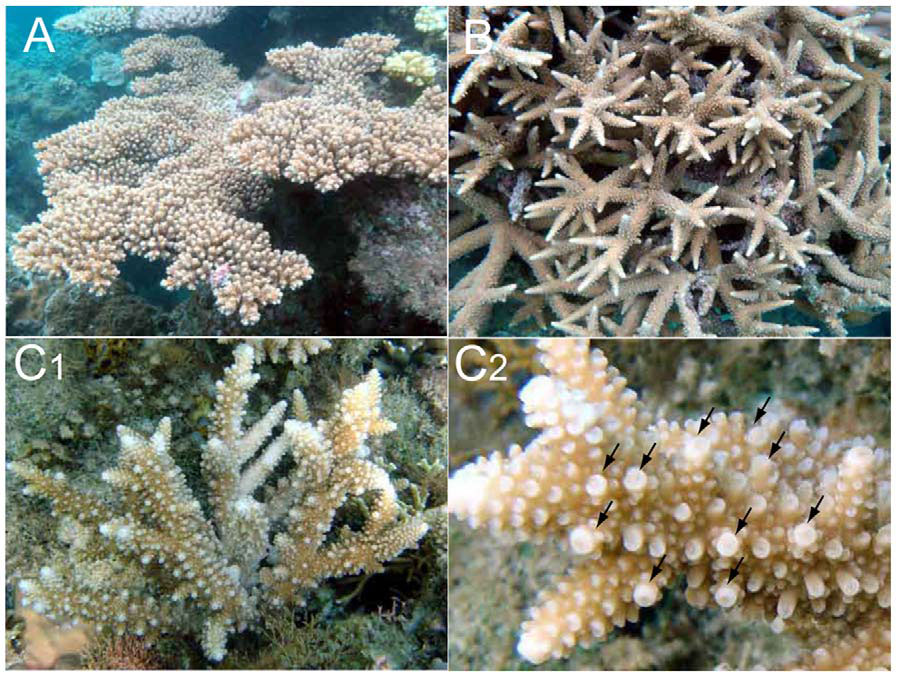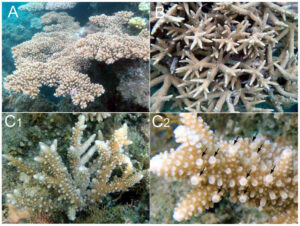Acropora prolifera is a confirmed ‘hybrid species’ of stony coral living in the Caribbean which is a direct F1 hybrid between the actual species, A. cervicornis and A. palmata. This precedent for Acropora hybridization where two species occur has led scientists to conclude that many other species of stony coral must hybridize in the Pacific Ocean as well, but no colonies had made good candidates for direct crossings, until now.
Starting with eggs and sperm of both Acropora prolifera and Acropora intermedia, Japanese scientists performed direct hybrid crossings of both species, with both possible parental lineages. All larvae of the resulting cross were viable but the hybrid cross showed delayed development by one hour, and the larvae resulting from crosses made with the eggs of Acropora prolifera survived considerably longer.
Additionally, the same paper discusses the identification of a wild staghorn coral colony which showed an intermediate morphology of the same two species which were intentionally hybridized. Genetic analysis showed that the resulting Acropora hybrid was created from the eggs of Acropora prolifera, further supporting the robustness of this species.
Surely, of all the stony corals and hundreds of thousands of Acropora colonies that have been harvested for the aquarium trade, some of them must have the kind of mixed up parental history to create new and unique form. These unusual corals is what we aquarists are always on the lookout for, at least we know we are, and there must be some strains of ‘domesticated’ Acro strains which share some of the unique traits of hybrid crosses.
So the next time you’re spying on a particularly unusual staghorn coral, consider that it could be a hybrid and grow into something wild and unexpected. The Acropora hybrid research paper was undertaken by Naoko Isomura et. al. and published in PLoS ONE, Possible Natural Hybridization of Two Morphologically Distinct Species of Acropora (Cnidaria, Scleractinia) in the Pacific: Fertilization and Larval Survival Rates.




